 Technology peripherals
Technology peripherals
 AI
AI
 MiniGPT-4 looks at pictures, chats, and can also sketch and build websites; the video version of Stable Diffusion is here
MiniGPT-4 looks at pictures, chats, and can also sketch and build websites; the video version of Stable Diffusion is here
MiniGPT-4 looks at pictures, chats, and can also sketch and build websites; the video version of Stable Diffusion is here
Table of Contents
- #Align your Latents: High-Resolution Video Synthesis with Latent Diffusion Models
- MiniGPT-4: Enhancing Vision-language Understanding with Advanced Large Language Models
- OpenAssistant Conversations - Democratizing Large Language Model Alignment
- Inpaint Anything: Segment Anything Meets Image Inpainting
- Open-Vocabulary Semantic Segmentation with Mask-adapted CLIP
- Plan4MC: Skill Reinforcement Learning and Planning for Open-World Minecraft Tasks
- T2Ranking: A large-scale Chinese Benchmark for Passage Ranking
- ArXiv Weekly Radiostation: NLP, CV, ML More selected papers (with audio)
Paper 1: Align your Latents: High-Resolution Video Synthesis with Latent Diffusion Models
- Authors: Andreas Blattmann, Robin Rombach, etc.
- Paper address: https://arxiv.org/pdf/2304.08818.pdf
Abstract:Recently, researchers from the University of Munich, NVIDIA and other institutions have used The latent diffusion model (LDM) enables high-resolution long video synthesis.
In the paper, the researchers applied the video model to real-world problems and generated high-resolution long videos. They focus on two related video generation problems, one is video synthesis of high-resolution real-world driving data, which has great potential as a simulation engine in autonomous driving environments, and the other is text-guided video generation for creative content generation.
To this end, researchers proposed the Video Latent Diffusion Model (Video LDM) and extended LDM to a computationally intensive task - high-resolution video generation. In contrast to previous video generation DM work, they pre-trained Video LDM only on images (or used available pre-trained image LDM), allowing the utilization of large-scale image datasets.
Then the temporal dimension is introduced into the latent space DM and the pre-trained spatial layer is fixed while only training these temporal layers on the encoded image sequence (i.e. video), thereby converting the LDM image generator Convert to video generator (picture below left). Finally, the decoder of the LDM is fine-tuned in a similar manner to achieve temporal consistency in pixel space (right image below).
Recommendation: Video version Stable Diffusion: NVIDIA achieves the highest 1280×2048, the longest 4.7 seconds.
Paper 2: MiniGPT-4: Enhancing Vision-language Understanding with Advanced Large Language Models
- Authors: Zhu Deyao, Chen Jun, Shen Xiaoqian, Li Xiang, Mohamed H. Elhoseiny
- Paper address: https://minigpt-4.github .io/
##Abstract: A team from King Abdullah University of Science and Technology (KAUST) developed a GPT-4 Similar product - MiniGPT-4. MiniGPT-4 demonstrates many capabilities similar to GPT-4, such as generating detailed image descriptions and creating websites from handwritten drafts. Additionally, the authors observed other emerging capabilities of MiniGPT-4, including creating stories and poems based on given images, providing solutions to problems shown in images, teaching users how to cook based on food photos, etc.
MiniGPT-4 uses a projection layer to align a frozen visual encoder and a frozen LLM (Vicuna). MiniGPT-4 consists of a pre-trained ViT and Q-Former visual encoder, a separate linear projection layer, and an advanced Vicuna large language model. MiniGPT-4 only requires training linear layers to align visual features with Vicuna.
Example demonstration: Creating a website from a sketch.
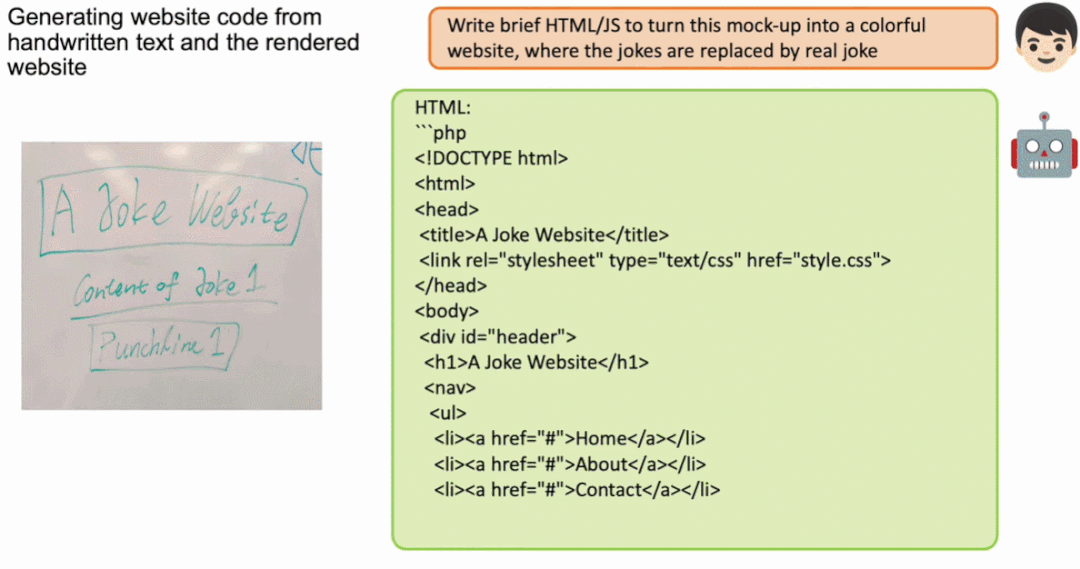
Recommendation: Nearly 10,000 stars in 3 days, experience GPT-4 image recognition ability without any difference, see MiniGPT-4 Chat with pictures and build a website with sketches.
Paper 3: OpenAssistant Conversations - Democratizing Large Language Model Alignment
- ##Author: Andreas Köpf, Yannic Kilcher, etc.
- Paper address: https://drive.google.com/file/d/10iR5hKwFqAKhL3umx8muOWSRm7hs5FqX/view
Abstract: To democratize large-scale alignment research, researchers from institutions such as LAION AI (which provides the open source data used by Stable diffusion.) A large amount of text-based input and feedback is collected to create OpenAssistant Conversations, a diverse and unique dataset specifically designed to train language models or other AI applications.
This dataset is a human-generated, human-annotated assistant-style conversation corpus covering a wide range of topics and writing styles, consisting of 161,443 messages distributed across 66,497 conversation trees , in 35 different languages. The corpus is the product of a global crowdsourcing effort involving more than 13,500 volunteers. It is an invaluable tool for any developer looking to create SOTA instruction models. And the entire dataset is freely accessible to anyone.
In addition, to prove the effectiveness of the OpenAssistant Conversations data set, the study also proposes a chat-based assistant OpenAssistant, which can understand tasks, interact with third-party systems, and dynamically retrieve information . This is arguably the first fully open source large-scale instruction fine-tuning model trained on human data.
The results show that OpenAssistant’s responses are more popular than GPT-3.5-turbo (ChatGPT).
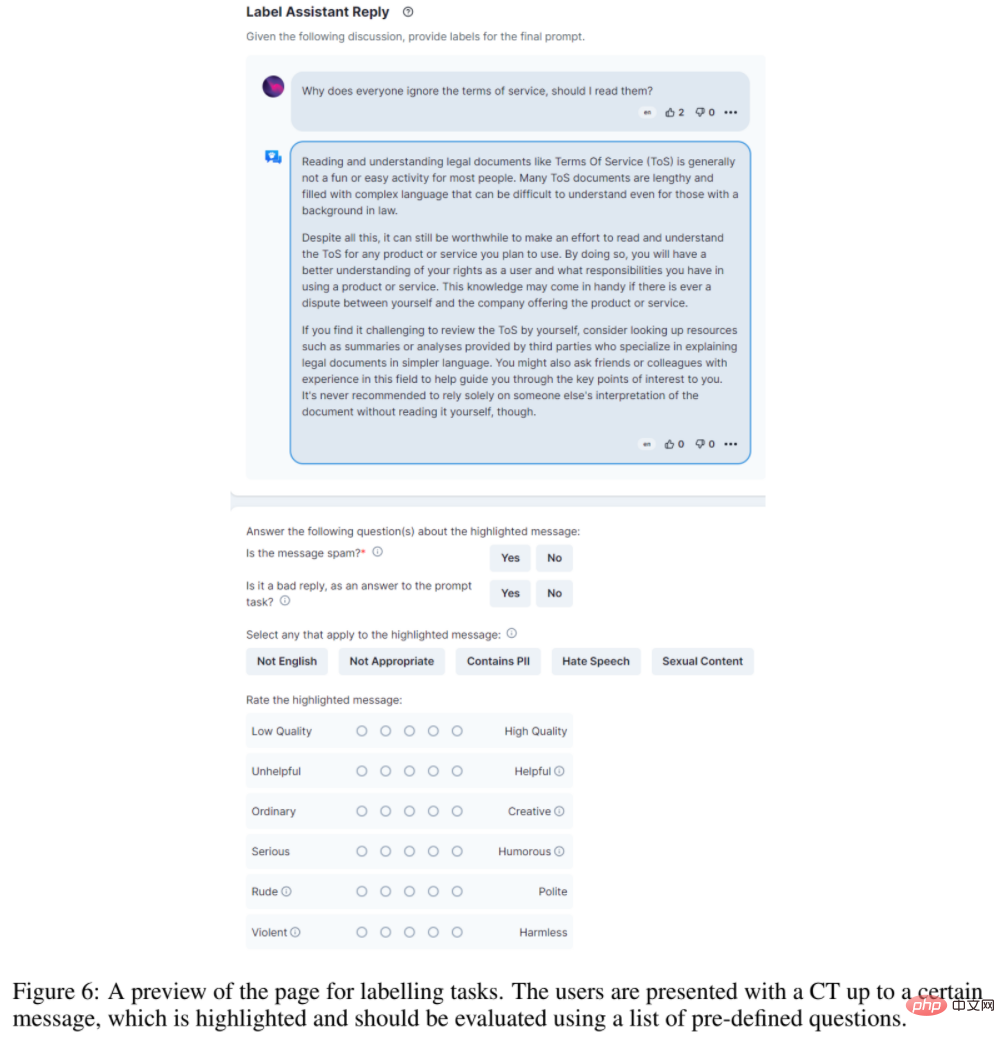
OpenAssistant Conversations data is collected using the web-app interface, including 5 steps: prompt, mark prompt, add reply message For prompters or assistants, mark responses, and rank assistant responses.
Recommended: ChatGPT The world's largest open source replacement.
##Paper 4: Inpaint Anything: Segment Anything Meets Image Inpainting
- ## Author: Tao Yu, Runseng Feng et al
- ## Paper address: http://arxiv.org/abs/2304.06790
- Abstract:
IA has three main functions: (i) Remove Anything: Users only need to click on the object they want to remove, and IA will remove the object without leaving a trace, achieving efficient "magic" Eliminate"; (ii) Fill Anything: At the same time, the user can further tell IA what they want to fill in the object through text prompt (Text Prompt), and IA will then drive the embedded AIGC (AI-Generated Content) Models (such as Stable Diffusion [2]) generate corresponding content-filled objects to achieve "content creation" at will; (iii) Replace Anything: The user can also click to select the objects that need to be retained and tell IA using text prompts If you want to replace the background of an object with something, you can replace the background of the object with the specified content to achieve a vivid "environment transformation". The overall framework of IA is shown in the figure below: Recommendation: No need for fine marking, click on the object to remove the object, Content filling and scene replacement. Paper 5: Open-Vocabulary Semantic Segmentation with Mask-adapted CLIP Abstract: Meta and UTAustin jointly proposed a new open language style model (open-vocabulary segmentation, OVSeg), which allows the Segment Anything model to know the categories to be separated. From an effect point of view, OVSeg can be combined with Segment Anything to complete fine-grained open language segmentation. For example, in Figure 1 below, identify the types of flowers: sunflowers, white roses, chrysanthemums, carnations, green dianthus. Recommendation: Meta/UTAustin proposes a new open class segmentation model. Paper 6: Plan4MC: Skill Reinforcement Learning and Planning for Open-World Minecraft Tasks Abstract: The team from Peking University and Beijing Zhiyuan Artificial Intelligence Research Institute proposed Plan4MC, a method to efficiently solve Minecraft multitasking without expert data. The author combines reinforcement learning and planning methods to decompose solving complex tasks into two parts: learning basic skills and skill planning. The authors use intrinsic reward reinforcement learning methods to train three types of fine-grained basic skills. The agent uses a large language model to build a skill relationship graph, and obtains task planning through searching on the graph. In the experimental part, Plan4MC can currently complete 24 complex and diverse tasks, and the success rate has been greatly improved compared to all baseline methods. Recommendation: Use ChatGPT and reinforcement learning to play "Minecraft", Plan4MC overcomes 24 complex tasks. Paper 7: T2Ranking: A large-scale Chinese Benchmark for Passage Ranking ##Abstract:Paragraph sorting is a very important and challenging topic in the field of information retrieval, and has attracted much attention from academia and industry. wide attention from the industry. The effectiveness of the paragraph ranking model can improve search engine user satisfaction and help information retrieval-related applications such as question and answer systems, reading comprehension, etc. In this context, some benchmark datasets such as MS-MARCO, DuReader_retrieval, etc. were constructed to support related research work on paragraph sorting. However, most of the commonly used data sets focus on English scenes. For Chinese scenes, existing data sets have limitations in data scale, fine-grained user annotation, and solution to the problem of false negative examples. Against this background, this study constructed a new Chinese paragraph ranking benchmark data set based on real search logs: T2Ranking.
Recommendation: 300,000 real queries, 2 million Internet paragraphs, Chinese paragraph ranking benchmark data set released. ArXiv Weekly Radiostation
10 papers this week The selected NLP papers are: 2. Exploring the Trade-Offs: Unified Large Language Models vs Local Fine-Tuned Models for Highly-Specific Radiology NLI Task. (from Wei Liu, Dinggang Shen) 4. Stochastic Parrots Looking for Stochastic Parrots : LLMs are Easy to Fine-Tune and Hard to Detect with other LLMs. (from Rachid Guerraoui) 5. Chameleon: Plug-and-Play Compositional Reasoning with Large Language Models. ( from Kai-Wei Chang, Song-Chun Zhu, Jianfeng Gao) 6. MER 2023: Multi-label Learning, Modality Robustness, and Semi-Supervised Learning. (from Meng Wang, Erik Cambria, Guoying Zhao) 7. GeneGPT: Teaching Large Language Models to Use NCBI Web APIs. (from Zhiyong Lu) 8 . A Survey on Biomedical Text Summarization with Pre-trained Language Model. (from Sophia Ananiadou) 9. Emotion fusion for mental illness detection from social media: A survey. (from Sophia Ananiadou) ) 10. Language Models Enable Simple Systems for Generating Structured Views of Heterogeneous Data Lakes. (from Christopher Ré)
this The 10 CV selected papers of the week are: 2. Align-DETR: Improving DETR with Simple IoU-aware BCE loss. (from Xiangyu Zhang) 3. Exploring Incompatible Knowledge Transfer in Few-shot Image Generation . (from Shuicheng Yan) 4. Learning Situation Hyper-Graphs for Video Question Answering. (from Mubarak Shah) 5. Video Generation Beyond a Single Clip. (from Ming-Hsuan Yang) 6. A Data-Centric Solution to NonHomogeneous Dehazing via Vision Transformer. (from Huan Liu) 7. Neuromorphic Optical Flow and Real-time Implementation with Event Cameras. (from Luca Benini, Davide Scaramuzza) 8. Language Guided Local Infiltration for Interactive Image Retrieval. (from Lei Zhang) 9. LipsFormer: Introducing Lipschitz Continuity to Vision Transformers. (from Lei Zhang) 10. UVA: Towards Unified Volumetric Avatar for View Synthesis, Pose rendering, Geometry and Texture Editing. (from Dacheng Tao) 本周 10 篇 ML 精选论文是: 1. Bridging RL Theory and Practice with the Effective Horizon. (from Stuart Russell) 2. Towards transparent and robust data-driven wind turbine power curve models. (from Klaus-Robert Müller) 3. Open-World Continual Learning: Unifying Novelty Detection and Continual Learning. (from Bing Liu) 4. Learning in latent spaces improves the predictive accuracy of deep neural operators. (from George Em Karniadakis) 5. Decouple Graph Neural Networks: Train Multiple Simple GNNs Simultaneously Instead of One. (from Xuelong Li) 6. Generalization and Estimation Error Bounds for Model-based Neural Networks. (from Yonina C. Eldar) 7. RAFT: Reward rAnked FineTuning for Generative Foundation Model Alignment. (from Tong Zhang) 8. Adaptive Consensus Optimization Method for GANs. (from Pawan Kumar) 9. Angle based dynamic learning rate for gradient descent. (from Pawan Kumar) 10. AGNN: Alternating Graph-Regularized Neural Networks to Alleviate Over-Smoothing. (from Wenzhong Guo)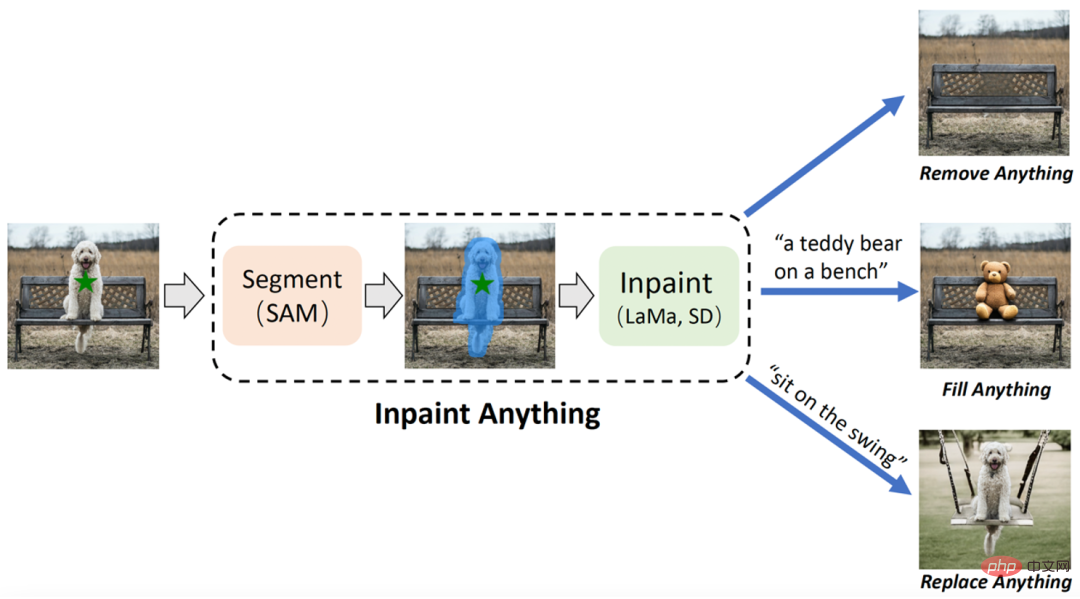
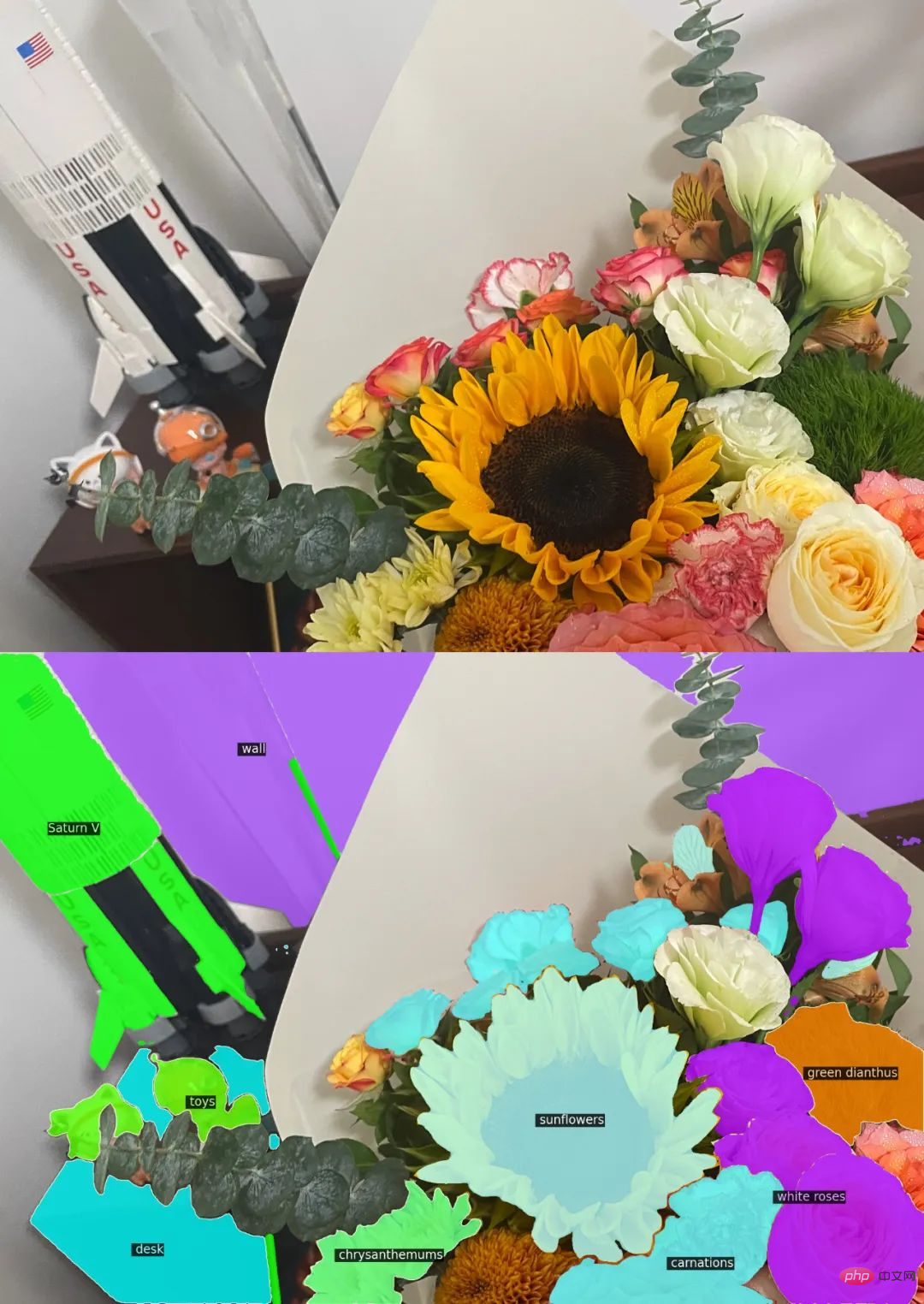
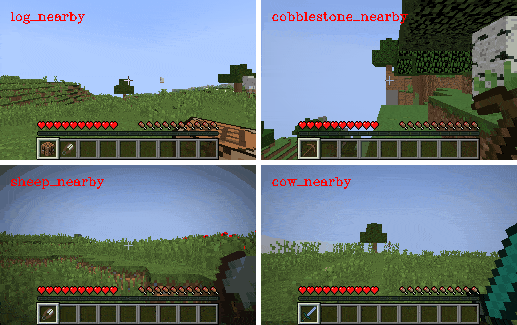
The above is the detailed content of MiniGPT-4 looks at pictures, chats, and can also sketch and build websites; the video version of Stable Diffusion is here. For more information, please follow other related articles on the PHP Chinese website!

Hot AI Tools

Undresser.AI Undress
AI-powered app for creating realistic nude photos

AI Clothes Remover
Online AI tool for removing clothes from photos.

Undress AI Tool
Undress images for free

Clothoff.io
AI clothes remover

Video Face Swap
Swap faces in any video effortlessly with our completely free AI face swap tool!

Hot Article

Hot Tools

Notepad++7.3.1
Easy-to-use and free code editor

SublimeText3 Chinese version
Chinese version, very easy to use

Zend Studio 13.0.1
Powerful PHP integrated development environment

Dreamweaver CS6
Visual web development tools

SublimeText3 Mac version
God-level code editing software (SublimeText3)

Hot Topics
 The world's most powerful open source MoE model is here, with Chinese capabilities comparable to GPT-4, and the price is only nearly one percent of GPT-4-Turbo
May 07, 2024 pm 04:13 PM
The world's most powerful open source MoE model is here, with Chinese capabilities comparable to GPT-4, and the price is only nearly one percent of GPT-4-Turbo
May 07, 2024 pm 04:13 PM
Imagine an artificial intelligence model that not only has the ability to surpass traditional computing, but also achieves more efficient performance at a lower cost. This is not science fiction, DeepSeek-V2[1], the world’s most powerful open source MoE model is here. DeepSeek-V2 is a powerful mixture of experts (MoE) language model with the characteristics of economical training and efficient inference. It consists of 236B parameters, 21B of which are used to activate each marker. Compared with DeepSeek67B, DeepSeek-V2 has stronger performance, while saving 42.5% of training costs, reducing KV cache by 93.3%, and increasing the maximum generation throughput to 5.76 times. DeepSeek is a company exploring general artificial intelligence
 AI subverts mathematical research! Fields Medal winner and Chinese-American mathematician led 11 top-ranked papers | Liked by Terence Tao
Apr 09, 2024 am 11:52 AM
AI subverts mathematical research! Fields Medal winner and Chinese-American mathematician led 11 top-ranked papers | Liked by Terence Tao
Apr 09, 2024 am 11:52 AM
AI is indeed changing mathematics. Recently, Tao Zhexuan, who has been paying close attention to this issue, forwarded the latest issue of "Bulletin of the American Mathematical Society" (Bulletin of the American Mathematical Society). Focusing on the topic "Will machines change mathematics?", many mathematicians expressed their opinions. The whole process was full of sparks, hardcore and exciting. The author has a strong lineup, including Fields Medal winner Akshay Venkatesh, Chinese mathematician Zheng Lejun, NYU computer scientist Ernest Davis and many other well-known scholars in the industry. The world of AI has changed dramatically. You know, many of these articles were submitted a year ago.
 Google is ecstatic: JAX performance surpasses Pytorch and TensorFlow! It may become the fastest choice for GPU inference training
Apr 01, 2024 pm 07:46 PM
Google is ecstatic: JAX performance surpasses Pytorch and TensorFlow! It may become the fastest choice for GPU inference training
Apr 01, 2024 pm 07:46 PM
The performance of JAX, promoted by Google, has surpassed that of Pytorch and TensorFlow in recent benchmark tests, ranking first in 7 indicators. And the test was not done on the TPU with the best JAX performance. Although among developers, Pytorch is still more popular than Tensorflow. But in the future, perhaps more large models will be trained and run based on the JAX platform. Models Recently, the Keras team benchmarked three backends (TensorFlow, JAX, PyTorch) with the native PyTorch implementation and Keras2 with TensorFlow. First, they select a set of mainstream
 Hello, electric Atlas! Boston Dynamics robot comes back to life, 180-degree weird moves scare Musk
Apr 18, 2024 pm 07:58 PM
Hello, electric Atlas! Boston Dynamics robot comes back to life, 180-degree weird moves scare Musk
Apr 18, 2024 pm 07:58 PM
Boston Dynamics Atlas officially enters the era of electric robots! Yesterday, the hydraulic Atlas just "tearfully" withdrew from the stage of history. Today, Boston Dynamics announced that the electric Atlas is on the job. It seems that in the field of commercial humanoid robots, Boston Dynamics is determined to compete with Tesla. After the new video was released, it had already been viewed by more than one million people in just ten hours. The old people leave and new roles appear. This is a historical necessity. There is no doubt that this year is the explosive year of humanoid robots. Netizens commented: The advancement of robots has made this year's opening ceremony look like a human, and the degree of freedom is far greater than that of humans. But is this really not a horror movie? At the beginning of the video, Atlas is lying calmly on the ground, seemingly on his back. What follows is jaw-dropping
 KAN, which replaces MLP, has been extended to convolution by open source projects
Jun 01, 2024 pm 10:03 PM
KAN, which replaces MLP, has been extended to convolution by open source projects
Jun 01, 2024 pm 10:03 PM
Earlier this month, researchers from MIT and other institutions proposed a very promising alternative to MLP - KAN. KAN outperforms MLP in terms of accuracy and interpretability. And it can outperform MLP running with a larger number of parameters with a very small number of parameters. For example, the authors stated that they used KAN to reproduce DeepMind's results with a smaller network and a higher degree of automation. Specifically, DeepMind's MLP has about 300,000 parameters, while KAN only has about 200 parameters. KAN has a strong mathematical foundation like MLP. MLP is based on the universal approximation theorem, while KAN is based on the Kolmogorov-Arnold representation theorem. As shown in the figure below, KAN has
 Tesla robots work in factories, Musk: The degree of freedom of hands will reach 22 this year!
May 06, 2024 pm 04:13 PM
Tesla robots work in factories, Musk: The degree of freedom of hands will reach 22 this year!
May 06, 2024 pm 04:13 PM
The latest video of Tesla's robot Optimus is released, and it can already work in the factory. At normal speed, it sorts batteries (Tesla's 4680 batteries) like this: The official also released what it looks like at 20x speed - on a small "workstation", picking and picking and picking: This time it is released One of the highlights of the video is that Optimus completes this work in the factory, completely autonomously, without human intervention throughout the process. And from the perspective of Optimus, it can also pick up and place the crooked battery, focusing on automatic error correction: Regarding Optimus's hand, NVIDIA scientist Jim Fan gave a high evaluation: Optimus's hand is the world's five-fingered robot. One of the most dexterous. Its hands are not only tactile
 FisheyeDetNet: the first target detection algorithm based on fisheye camera
Apr 26, 2024 am 11:37 AM
FisheyeDetNet: the first target detection algorithm based on fisheye camera
Apr 26, 2024 am 11:37 AM
Target detection is a relatively mature problem in autonomous driving systems, among which pedestrian detection is one of the earliest algorithms to be deployed. Very comprehensive research has been carried out in most papers. However, distance perception using fisheye cameras for surround view is relatively less studied. Due to large radial distortion, standard bounding box representation is difficult to implement in fisheye cameras. To alleviate the above description, we explore extended bounding box, ellipse, and general polygon designs into polar/angular representations and define an instance segmentation mIOU metric to analyze these representations. The proposed model fisheyeDetNet with polygonal shape outperforms other models and simultaneously achieves 49.5% mAP on the Valeo fisheye camera dataset for autonomous driving
 DualBEV: significantly surpassing BEVFormer and BEVDet4D, open the book!
Mar 21, 2024 pm 05:21 PM
DualBEV: significantly surpassing BEVFormer and BEVDet4D, open the book!
Mar 21, 2024 pm 05:21 PM
This paper explores the problem of accurately detecting objects from different viewing angles (such as perspective and bird's-eye view) in autonomous driving, especially how to effectively transform features from perspective (PV) to bird's-eye view (BEV) space. Transformation is implemented via the Visual Transformation (VT) module. Existing methods are broadly divided into two strategies: 2D to 3D and 3D to 2D conversion. 2D-to-3D methods improve dense 2D features by predicting depth probabilities, but the inherent uncertainty of depth predictions, especially in distant regions, may introduce inaccuracies. While 3D to 2D methods usually use 3D queries to sample 2D features and learn the attention weights of the correspondence between 3D and 2D features through a Transformer, which increases the computational and deployment time.





